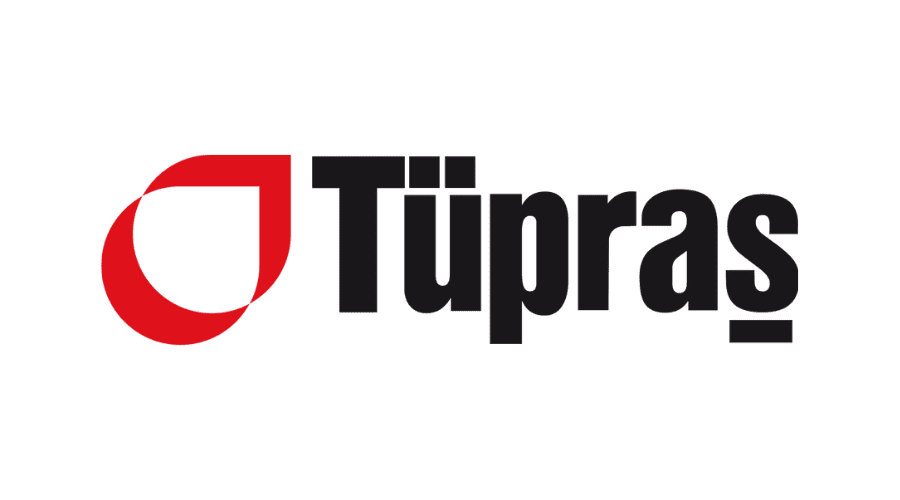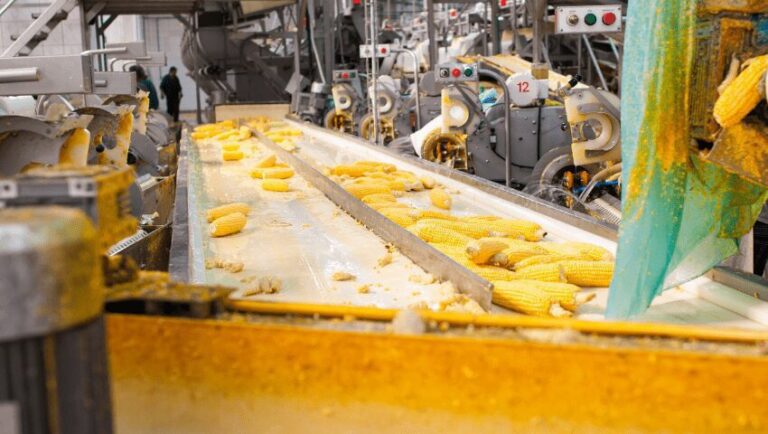Table of Contents
Explore a comprehensive analysis of Tupras Stock and Company, Turkey’s largest oil refiner, to assess its investment potential.
Learn about its business operations, strengths, weaknesses, industry trends, regulatory environment, innovation, marketing, branding, and future outlook to make informed investment decisions.

Tupras: Company Overview
1. Business and Operations
Tüpraş (Türkiye Petrol Rafinerileri A.Ş.) is the largest oil refining company in Turkey, with a significant presence in the country’s energy sector. It operates four refineries, which are located in Izmit, Kırıkkale, İzmir, and Batman. Tüpraş specializes in processing crude oil and producing a wide range of petroleum products, such as:
- Gasoline
- Diesel
- Jet fuel
- Fuel oil
- Liquefied petroleum gas (LPG)
- Asphalt
- Base oils
- Petrochemical feedstocks
2. Products and Services
Tüpraş offers a diverse portfolio of products and services to cater to the needs of various industries and customers. These include:
2.1. Refining Services
Tüpraş refines crude oil into high-quality petroleum products and petrochemical feedstocks, ensuring efficient operations and meeting environmental standards.
2.2. Supply and Trading
The company engages in the supply and trading of crude oil and petroleum products, both domestically and internationally, making it a key player in the energy markets.
2.3. Logistics and Storage
Tüpraş operates an extensive logistics and storage network, which includes pipelines, tanker trucks, and storage facilities, ensuring reliable product delivery to its customers.
2.4. Petrochemicals
Tüpraş is also involved in the petrochemicals sector, producing and marketing feedstocks for various industries, such as plastics, textiles, and chemicals.
3. Target Market
Tüpraş serves a wide range of customers and industries, including:
- Automotive
- Aviation
- Construction
- Manufacturing
- Transportation
- Agriculture
- Retail fuel distributors
- Industrial and commercial users
4. Geographical Reach
While Tüpraş primarily operates within Turkey, it also exports its products to various international markets. Its strategic location allows it to serve as a key supplier for the European, Middle Eastern, and North African regions. Additionally, the company’s trading operations provide it with a global presence in the energy markets.
Tupras: Competitive Landscape
1. Industry Overview
Tüpraş operates in the oil refining and petrochemical industry, which includes the processing of crude oil into various petroleum products and petrochemical feedstocks. The industry is characterized by high capital requirements, stringent environmental regulations, and significant competition from both domestic and international players. Key factors influencing the industry’s performance include global crude oil prices, refining margins, and demand for petroleum products.
2. Main Competitors
Although Tüpraş is the largest oil refining company in Turkey, it faces competition from both domestic and international players. Some of the main competitors include:
2.1. Domestic Competitors
- OPET: A Turkish fuel distributor and retailer, which also engages in the storage and trading of petroleum products.
- Petkim: A Turkish petrochemical company producing a wide range of petrochemical products, including polyethylene, polypropylene, and PVC.
[stock_market_widget type=”accordion” template=”info” color=”#8304D6″ assets=”TUPRS.IS,PETKM.IS” start_expanded=”false” display_currency_symbol=”true” api=”yf”]
2.2. International Competitors
- OMV: An Austrian integrated oil and gas company with refining and petrochemical operations across Europe and the Middle East.
- MOL Group: A Hungarian multinational oil and gas company with refining and petrochemical activities in Central and Eastern Europe.
- SOCAR: The State Oil Company of Azerbaijan, which operates a refinery in Turkey and engages in the production, processing, and marketing of petroleum products.
3. Industry Trends
Several trends are shaping the competitive landscape of the oil refining and petrochemical industry:
3.1. Energy Transition
The global shift towards cleaner and renewable energy sources is impacting the demand for traditional petroleum products. Companies in the industry are investing in alternative energy projects and exploring new technologies to reduce their carbon footprint and adapt to the changing energy landscape.
3.2. Digital Transformation
Digitalization and automation are driving efficiency improvements in refining and petrochemical operations. Companies are leveraging advanced analytics, artificial intelligence, and the Industrial Internet of Things (IIoT) to optimize their processes and reduce operational costs.
3.3. Changing Regulations
Stricter environmental regulations are pushing companies to invest in cleaner production technologies and adapt their product portfolios to meet the new standards. This trend is leading to increased demand for low-sulfur fuels and other environmentally friendly products.
4. Challenges Facing the Industry
Some of the challenges confronting the oil refining and petrochemical industry include:
4.1. Volatile Commodity Prices
Fluctuations in global crude oil prices can significantly impact refining margins and profitability for companies like Tüpraş. Additionally, economic uncertainties can lead to unpredictable demand for petroleum products.
4.2. Regulatory Compliance
Complying with increasingly stringent environmental regulations requires significant investments in new technologies and infrastructure, which can erode profit margins.
4.3. Geopolitical Risks
Geopolitical tensions in the Middle East and other oil-producing regions can disrupt the supply of crude oil, leading to price volatility and potential operational challenges for refining companies.
Tupras: Strengths and Weaknesses
1. Strengths
1.1. Market Leadership
As the largest oil refiner in Turkey, Tüpraş enjoys a dominant position in the domestic market. This provides the company with a strong customer base and a steady stream of revenue.
1.2. Diverse Product Portfolio
Tüpraş offers a wide range of petroleum products and petrochemical feedstocks, enabling it to cater to various industries and customers. This diversification helps mitigate risks associated with fluctuations in demand for specific products.
1.3. Strategic Location
Tüpraş’ refineries are strategically located, providing the company with access to key markets in Europe, the Middle East, and North Africa. This allows Tüpraş to benefit from regional growth and capitalize on international trading opportunities.
1.4. Vertical Integration
The company’s involvement in multiple stages of the oil supply chain, from refining to distribution, provides it with a competitive advantage. Vertical integration allows Tüpraş to optimize operations and better manage costs, ensuring higher margins.

2. Weaknesses
2.1. Dependence on Crude Oil Prices
Tüpraş’ revenue and profitability are significantly influenced by fluctuations in global crude oil prices. Volatility in oil prices can impact the company’s financial performance, making it susceptible to market uncertainties.
2.2. Regulatory Risks
The oil refining and petrochemical industries are subject to stringent environmental regulations. Tüpraş faces the risk of increased compliance costs and potential fines in case of non-compliance, which may affect its financial performance.
2.3. Limited International Presence
Although Tüpraş exports its products to various international markets, its operations are primarily focused on Turkey. This concentration exposes the company to risks associated with the domestic market, such as political instability and economic downturns.
2.4. Competition
Tüpraş faces competition from both domestic and international players in the oil refining and petrochemical sectors. Increased competition can put pressure on the company’s margins and market share, affecting its overall performance.
In conclusion, while Tüpraş boasts several competitive advantages, such as market leadership and a diverse product portfolio, it also faces risks related to crude oil price volatility, regulatory compliance, and competition. As an investor, it’s essential to weigh these strengths and weaknesses while evaluating Tüpraş as a potential investment.
Tupras: Valuation Analysis
In order to determine the valuation of Tüpraş, we will examine various key financial metrics and compare them to the industry averages. This analysis can help investors ascertain whether the stock is overvalued or undervalued, the data is based on the latest calculations from March 2023
1. Price-to-Earnings Ratio (P/E Ratio)
- Tupras P/E Ratio TTM: 3.58
- Industry P/E Ratio TTM: 3.97
The P/E ratio is a key valuation metric that compares a company’s stock price to its earnings per share (EPS). A lower P/E ratio indicates that a stock may be undervalued relative to its earnings potential. Tüpraş has a P/E ratio of 3.58, which is slightly lower than the industry average of 3.97. This suggests that the stock might be undervalued compared to its peers.
2. Price-to-Sales Ratio (P/S Ratio)
- Tupras Price to Sales TTM: 0.31
- Industry Price to Sales TTM: 0.4
The P/S ratio compares a company’s stock price to its revenue. A lower P/S ratio indicates that a stock is potentially undervalued relative to its sales. Tüpraş has a P/S ratio of 0.31, which is lower than the industry average of 0.4. This indicates that the stock might be undervalued in terms of its revenue generation.
3. Price-to-Cash Flow Ratio
- Tupras Price to Cash Flow MRQ: 3.35
- Industry Price to Cash Flow MRQ: -6.66
The price-to-cash flow ratio compares a company’s stock price to its cash flow from operations. A lower ratio can signify that a stock is undervalued. Tüpraş has a price-to-cash flow ratio of 3.35, while the industry average is -6.66. The positive value for Tüpraş suggests a healthier cash flow position than the industry average, making it a potentially attractive investment.
4. Price-to-Free Cash Flow Ratio
- Tupras Price to Free Cash Flow TTM: 3.57
- Industry Price to Free Cash Flow TTM: 1.69
The price-to-free cash flow ratio compares a company’s stock price to its free cash flow. A lower ratio indicates that a stock may be undervalued. Tüpraş has a price-to-free cash flow ratio of 3.57, which is higher than the industry average of 1.69. This suggests that the stock might be overvalued in terms of its free cash flow generation.
Industry Trends: Oil Refining and Petrochemicals
To better understand the broader market environment and how it might impact Tüpraş’ performance, let’s examine the key trends and drivers in the oil refining and petrochemical industries.
1. Energy Transition
The global shift towards cleaner and more sustainable energy sources is pushing traditional oil refining and petrochemical companies to adapt their business models. This transition could lead to:
- 1.1. Increased investment in renewable energy: Companies may invest in alternative energy sources, such as biofuels, hydrogen, and solar power, to diversify their portfolios and meet evolving consumer preferences.
- 1.2. Stricter environmental regulations: Governments worldwide are implementing stricter regulations to reduce greenhouse gas emissions, which could impact refining operations and increase compliance costs for companies like Tüpraş.
2. Demand for Petrochemicals
Despite the push for renewable energy, demand for petrochemical products is expected to remain robust, driven by growth in industries such as:
- 2.1. Plastics and packaging: The increasing need for lightweight, durable materials in various applications supports demand for petrochemical-based products.
- 2.2. Construction: As urbanization and infrastructure development continue, demand for petrochemical products such as paints, coatings, and insulation materials is likely to grow.
3. Digitalization and Industry 4.0
Advancements in technology are transforming the oil refining and petrochemical sectors. Key trends include:
- 3.1. Automation and process optimization: The adoption of automation, artificial intelligence, and data analytics can help companies like Tüpraş improve operational efficiency, reduce costs, and enhance decision-making.
- 3.2. Supply chain optimization: Digital tools can enable companies to better manage and optimize their supply chains, improving product delivery and reducing logistical risks.
4. Geopolitical Factors
Fluctuations in oil prices and supply are often influenced by geopolitical factors, such as:
- 4.1. OPEC decisions: The Organization of Petroleum Exporting Countries (OPEC) plays a significant role in determining global oil supply levels and prices, which can impact the profitability of oil refining companies.
- 4.2. Political instability: Regional conflicts and political tensions can disrupt oil supply chains and affect the market dynamics, posing risks for companies operating in affected areas.
Understanding these trends and drivers can help investors gauge the potential impact on Tüpraş’ performance and make more informed investment decisions. While some trends, such as the growing demand for petrochemicals, could be beneficial, other factors like the energy transition and geopolitical risks might pose challenges for the company.
Regulatory Environment: Tupras
An analysis of the regulatory environment that Tüpraş operates in is essential to understand potential risks or opportunities. Key aspects of the regulatory landscape include government policies, industry standards, and legal and compliance issues.
1. Environmental Regulations
The oil refining and petrochemical sectors are subject to stringent environmental regulations, which can impact Tüpraş’ operations:
- 1.1. Emission standards: Governments worldwide are implementing stricter emission standards to combat climate change. Tüpraş must invest in technologies and processes to reduce greenhouse gas emissions and comply with these standards.
- 1.2. Waste management: Proper handling and disposal of hazardous waste generated during the refining process are crucial to avoid fines and penalties. Tüpraş must adhere to waste management regulations and best practices to minimize environmental impact.
2. Health and Safety Regulations
Tüpraş is required to comply with health and safety regulations to protect its workforce and prevent accidents:
- 2.1. Occupational safety: The company must ensure a safe working environment by adhering to industry standards and implementing safety training programs for its employees.
- 2.2. Process safety: Tüpraş should invest in technologies and systems to minimize the risk of accidents and incidents at its refineries, such as fires, explosions, and chemical releases.
3. International Trade Regulations
As an exporter of petroleum products and petrochemical feedstocks, Tüpraş must navigate the complexities of international trade regulations:
- 3.1. Export controls: Tüpraş must adhere to export control regulations imposed by different countries, which can impact the company’s ability to access certain markets and customers.
- 3.2. Trade agreements: The company should closely monitor developments in trade agreements and policies that may affect its export activities and market access.
[stock_market_widget type=”toast” template=”basic” assets=”TUPRS.IS” position=”bottomRight” transition_in=”flipInX” transition_out=”flipOutX” timeout=”5″ logo=”true” display_currency_symbol=”true” api=”yf”]
4. Taxation and Incentives
Government policies related to taxation and incentives can influence Tüpraş’ financial performance:
- 4.1. Corporate tax: Changes in corporate tax rates can directly impact the company’s profitability. Tüpraş must stay abreast of changes in tax policies and regulations in Turkey and other jurisdictions it operates in.
- 4.2. Incentives for renewable energy: Governments may offer incentives for companies to invest in renewable energy and clean technologies. Tüpraş could benefit from such policies by diversifying its energy sources and mitigating regulatory risks.
| Regulatory Aspect | Potential Impact on Tüpraş |
|---|---|
| Environmental Regulations | Compliance costs, investments in emission reduction technologies |
| Health and Safety Regulations | Workforce safety, investments in process safety |
| International Trade Regulations | Market access, export controls |
| Taxation and Incentives | Profitability, opportunities in renewable energy |
In conclusion, understanding the regulatory environment is crucial for assessing the potential risks and opportunities for Tüpraş. While the company must manage compliance costs and adapt to evolving regulations, it may also find opportunities to benefit from government incentives and policies that promote sustainable practices and renewable energy investments.
Innovation and R&D: Tüpraş
Evaluating Tüpraş’ innovation and research and development (R&D) efforts can provide insights into the company’s growth potential and competitive advantage. Here are some key aspects to consider:
1. Energy Efficiency and Emission Reduction
Tüpraş continuously invests in R&D to improve its energy efficiency and reduce emissions. These efforts include:
- 1.1. Upgrading facilities: Tüpraş invests in upgrading its refineries and facilities with modern technologies to optimize energy consumption and reduce environmental impact.
- 1.2. Carbon capture and storage: The company may explore carbon capture and storage (CCS) technologies to reduce greenhouse gas emissions and comply with increasingly stringent regulations.
2. Renewable Energy and Alternative Fuels
The global push for cleaner energy sources presents opportunities for Tüpraş to diversify its portfolio and invest in renewable energy technologies:
- 2.1. Biofuels: Tüpraş could invest in the production of biofuels, such as biodiesel and bioethanol, to meet the growing demand for cleaner transportation fuels.
- 2.2. Hydrogen: The company might explore opportunities in the hydrogen value chain, including hydrogen production and fuel cell technologies, to capitalize on the growing interest in hydrogen as an alternative energy source.
3. Digital Transformation and Industry 4.0
Tüpraş can gain a competitive advantage by embracing digital transformation and Industry 4.0 technologies:
- 3.1. Advanced analytics: The company can utilize advanced analytics and artificial intelligence (AI) tools to optimize refining processes, improve decision-making, and enhance operational efficiency.
- 3.2. Automation: Tüpraş can invest in automation technologies, such as robotics and process automation, to reduce costs and improve productivity.
4. Petrochemical Product Development
Innovation in petrochemical product development can help Tüpraş expand its product offerings and cater to emerging market needs:
- 4.1. High-performance materials: Tüpraş can invest in R&D to develop new, high-performance petrochemical products for industries such as automotive, aerospace, and construction.
- 4.2. Sustainable plastics: The company might explore opportunities in developing sustainable plastics, such as biodegradable or recyclable materials, to align with environmental concerns and consumer preferences.
In conclusion, Tüpraş’ commitment to innovation and R&D in areas such as energy efficiency, renewable energy, digital transformation, and petrochemical product development can help the company maintain a competitive edge and drive growth. Investors should closely monitor the company’s R&D efforts and progress in these areas to assess its potential for long-term success.
Marketing and Branding: Tüpraş
An analysis of Tüpraş’ marketing and branding efforts can help investors assess the company’s ability to attract and retain customers. Key aspects to consider include advertising campaigns, social media presence, and brand equity.
1. Advertising Campaigns
Tüpraş uses a mix of traditional and digital media channels to promote its products and services:
- 1.1. Traditional media: The company may rely on print, radio, and television advertisements to reach its target audience and showcase its offerings.
- 1.2. Digital marketing: Tüpraş can utilize digital marketing channels, such as search engine marketing (SEM), display advertising, and content marketing, to increase its online visibility and engage potential customers.
2. Social Media Presence
A strong social media presence is essential for companies to connect with their audience and strengthen their brand image:
- 2.1. Platform engagement: Tüpraş can leverage popular social media platforms, such as LinkedIn, Twitter, and Instagram, to share updates, industry news, and engage with its customers and stakeholders.
- 2.2. Community building: The company can use social media to build a community of followers and foster meaningful conversations around topics relevant to its industry and operations.
3. Brand Equity
Tüpraş’ brand equity can be assessed by evaluating the company’s reputation, recognition, and perceived value:
- 3.1. Reputation: As the largest oil refiner in Turkey, Tüpraş has built a strong reputation for quality, reliability, and innovation in its domestic market. This reputation can help the company maintain a loyal customer base and attract new customers.
- 3.2. Recognition: Tüpraş’ recognizable brand name and logo contribute to the company’s overall brand equity, making it easier for customers to identify its products and services.
- 3.3. Perceived value: The company’s commitment to innovation, sustainability, and customer satisfaction can enhance the perceived value of its brand, driving customer loyalty and preference.
4. Corporate Social Responsibility (CSR) and Sustainability
Tüpraş can further strengthen its brand image by focusing on CSR initiatives and sustainability:
- 4.1. Community involvement: The company can engage in community development programs, such as education, healthcare, and infrastructure, to create a positive impact on the communities in which it operates.
- 4.2. Environmental initiatives: Tüpraş can showcase its commitment to sustainability by investing in renewable energy, reducing emissions, and minimizing its environmental footprint.
Future Outlook: Tüpraş
A review of Tüpraş’ growth prospects and upcoming catalysts or risks can help investors make informed decisions about whether to buy, hold, or sell the stock. Key aspects to consider include market trends, potential opportunities, and risks that could impact the company’s performance.
1. Market Trends
Tüpraş’ future growth will be influenced by the overall trends in the oil refining and petrochemical industries:
- 1.1. Energy transition: As the global push for cleaner energy sources continues, Tüpraş must adapt its business model to stay competitive and capitalize on new opportunities in renewable energy and alternative fuels.
- 1.2. Petrochemical demand: Despite the shift towards renewables, demand for petrochemical products is expected to remain robust, driven by growth in industries such as plastics, packaging, and construction.
2. Potential Opportunities
Several opportunities could drive Tüpraş’ growth in the coming years:
- 2.1. Diversification into renewables: Investing in renewable energy sources, such as biofuels and hydrogen, can help Tüpraş diversify its portfolio and tap into new markets.
- 2.2. Innovation and R&D: Continued focus on innovation and R&D can help the company develop new products, improve operational efficiency, and gain a competitive advantage in the market.
- 2.3. Expansion in petrochemicals: Tüpraş can capitalize on the growing demand for petrochemical products by expanding its product offerings and targeting high-growth sectors.
3. Risks and Challenges
Tüpraş faces several risks and challenges that could impact its growth prospects:
- 3.1. Regulatory risks: Stricter environmental regulations and compliance requirements could increase operating costs and necessitate significant investments in emission reduction technologies.
- 3.2. Geopolitical risks: Fluctuations in oil prices and supply, driven by factors such as OPEC decisions and regional conflicts, can impact the company’s profitability and operations.
- 3.3. Competition: Tüpraş must stay ahead of its competitors by continuously innovating and improving its products and services to maintain market share and customer loyalty.
In conclusion, Tüpraş’ future outlook will be shaped by a combination of market trends, potential opportunities, and risks. Investors should consider these factors when deciding whether to buy, hold, or sell the stock. While the company faces challenges from the energy transition and regulatory risks, its focus on innovation, R&D, and diversification into renewables could offer promising growth prospects in the long term.
Tupras Stock Price
It is essential to get a quick snapshot of the company’s stock performance. The following table provides real-time information about Tüpraş’ stock, including its current price, absolute change, percentage change, and market capitalization.
Keep this data in mind as we explore the company’s operations, strengths, weaknesses, industry trends, and future outlook.
[stock_market_widget type=”table-quotes” template=”basic2″ color=”#8304D6″ assets=”TUPRS.IS” fields=”logo_name_symbol,price,change_abs,change_pct,market_cap” links=”{‘TUPRS.IS’:{}}” display_header=”true” display_chart=”true” display_currency_symbol=”true” pagination=”true” search=”false” rows_per_page=”5″ sort_field=”logo_name_symbol” sort_direction=”asc” alignment=”left” api=”yf”]
Tupras Company Contact Information
[stock_market_widget type=”key-value-table-companies” template=”basic” assets=”TUPRS.IS” fields=”logo_name,symbol,industry,sector,website,phone” api=”yf”]




